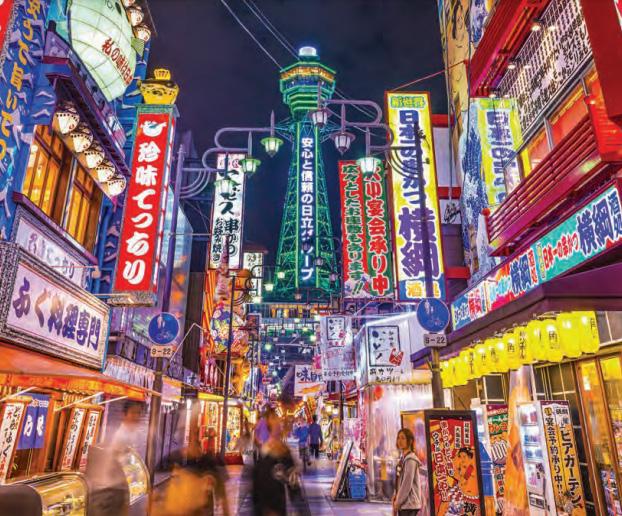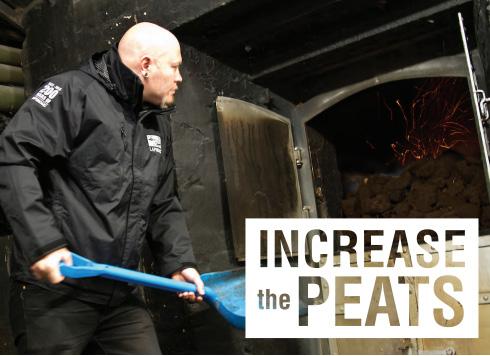
6 minute read
THE HIGHBALL
WHAT IS IT, WHERE ARE ITS ROOTS AND IS IT GOING TO BE THE NEXT BIG ALCOHOLIC BEVERAGE IN AUSTRALIA?
it is believed to be derived from train signals that indicated the train to go faster - and Highballs, watered down, allow one to consume whisk(e)y quicker.
Advertisement
British whisky bars also claim to hold the origins saying it comes from ‘ball’ meaning fun times and ‘high’ because they would serve it in a tall glass. The most accepted theory is that a New York barman named Patrick Gavin Duffy got the concept from his Scottish customers around 1896. It was said that a Scotsman was inclined to ask for cut whisk(e)y drinks by ordering it in a tall glass.
The word Highball is deemed to have come from the fact that the Celtic vocabulary was quite different with words like ‘cup’, ‘glass’ and ‘bowl’ interchangeable – same went for the word ‘high’ and ‘tall’. So where today we would ask for a ‘tall glass’, the Scottish patron of the years gone by would ask for a ‘high bowl’. Throw in the strong Scottish accent and to Patrick’s ears it sounded like ‘High ball’.
The Highball is said to have spread throughout the U.S.A.
For Japanese stomachs the perfect mix of light Japanese whisky and soda water was vital to their cultural habits, as alcohol was and still is today, traditionally enjoyed with a meal. So with this, the American style of drinking Highballs to spur good times mixed with the Japanese culture of consuming alcohol at meal times magnanimously clashed to cause a revolution of drinking in the country. Much like in the U.S. though, the Highball craze burnt brightly for a short time and by the 1980s the buzz had dwindled, with the general public turned off by the now high price of Japanese whisky, becoming attracted to new imported drinks.
By the 1990s, across the ocean in Europe, Highballs were taking off again as the new rave culture took hold, however, this time it wasn’t whisky that was getting used as the base mix –spirits like vodka and liqueurs were getting a run in a range of Highballs that would often feature sweet mixers, a far cry from the traditional soda water. The Japanese however, as the artists they are, couldn’t bear to let the Highball that had once defined their young whisky history fall by the wayside as it had for over 20 years, so when Suntory decided to reinvigorate the Highball, they did it in the most innovative way possible –they released it in a can mixed with soda water and lemon. Beer culture had gone to new heights in Japan with some of the biggest beers in the world coming from the Asian nation. Suntory believed the best way to compete with them, was to be like them – bringing the Highball back into homes across the country with just one crack of the lid. With that, the Highball culture flared up again and bars and restaurants alike started booming with drinkers enjoying a Suntory whisky, soda, lemon and ice daily.
Today the Highball is synonymous with a plethora of spirits and mixers but the original soda water mixer has made a resurgence not just globally but in Australia too. Buoyed by the success of the Japanese, the nation that took a simple idea and perfected it to a standard that can be easily enjoyed at home or beautifully crafted at bars and restaurants, Australian bartenders have also been making waves in this space.
Jim Beam Citrus Highball

GLASS: Glass mug / Highball
GARNISH: Rosemary sprig and lemon wedge
INGREDIENTS
45ml Jim Beam White Label
20ml Fresh Lemon Juice
Top with Soda water Ice
OPTIONAL: 10ml sugar syrup
Method Pour Jim Beam White over a packed glass of ice. Add fresh lemon juice, add sugar syrup (optional) and top with soda water. Stir with a long bar spoon, garnish and enjoy.
Hakushu Highball
GLASS: Highball / Collins
GARNISH: Mint leaf
INGREDIENTS:
30ml Hakushu Distillers Reserve
Top with Soda water
METHOD: Build over ice and stir. Garnish with a mint leaf.
Kakubin Highball
GLASS: Highball
GARNISH: Lemon wedge
INGREDIENTS:
30ml Suntory Whisky Kakubin
Squeeze of fresh lemon
Top with Soda water
METHOD: Build over ice and stir. Garnish with a lemon wedge.
Yamazaki Highball
GLASS: Highball
GARNISH: Lemon wedge
INGREDIENTS:
30ml Yamazaki Distillers Reserve Whisky
Top with Soda water
METHOD: Build over ice and stir. Garnish with a lemon wedge.
Bowmore Small Batch Highball
GLASS: Highball
GARNISH: Lemon wedge
INGREDIENTS:
60ml Bowmore Small Batch
Top with Soda water and Ice
METHOD: Build over ice and stir. Garnish with a lemon wedge
NOWADAYS, MOST BARTENDERS ARE BECOMING MORE FAMILIAR WITH WHAT PEAT IS. TO GET TECHNICAL, IT’S DECOMPOSED VEGETAL MATTER COMPRESSED THREE TO NINE FEET UNDER THE EARTH BETWEEN 2,000 AND 10,000 YEARS OLD. TO CAPTURE YOUR IMAGINATION, A BETTER WAY OF THINKING ABOUT PEAT IS TO DESCRIBE IT AS A TIME CAPSULE DISPLAYING WHAT WAS GROWING IN THAT PARTICULAR AREA THOUSANDS OF YEARS AGO. IT’S A FOSSIL FUEL HARVESTED UNDER THE EARTH’S SURFACE AND IT CHANGES OVER TIME. WHAT WE WANT IS TO CAPTURE IT ON ITS JOURNEY BETWEEN COMPOST AND COAL.
WORDS BY DAN WOOLLEY.
peat a very distinct flavor that sets them apart from any other whiskies in the world.
We have just released a new way of drinking smoky whiskies aptly named ‘the Peated Malts of Distinction’ where you get to enjoy different styles of Peat smoke but also step up the intensity by increasing the parts per million or for the self-proclaimed whisky geek, PPM. Starting off with a very unique whisky, the Connemara. It’s the only peated Irish single malt on the market and its lightly peated starting off at 14 PPM, something to just initiate the smoke. Leading into the Ardmore, again a very unique whisky as well, being that it’s the only Scottish Highland single malt whisky that’s peated. Now were looking at around 15 PPM but this whisky seems much smokier as it’s a different style of peat as well as a different aging procedure using a quarter cask for its second maturation making it very dry on the finish.

Throughout different parts of the world, mankind has been burning peat for thousands of years to heat their homes, cook their food, to smoke meat and fish and most importantly barley to make whisky! If you look at different regions throughout Scotland there is a vast difference in the flora from the mountains of the highlands to the rocky terrains of the islands and the coast. Different trees, shrubs, flowers and seaweeds are going to give us different types of peat and when burnt they will produce different styles of smoke.
The peat coming from the Highlands has sooty fireplace smokiness to it, earthy like wet soil and musty like compost. This is due to the large amount of trees that used to grow in the very fertile soil of the Highlands.

The peat from the islands is different again, even varying from island to island. The isle of Orkney has a very unique style of peat because of its location.
It’s so close to the Arctic Circle that the angry artic wind loaded with salt sweeps across the island with such fury that no trees have ever grown on the island. Instead we see the peat forming from decomposed heather, which is a low-lying scrub of a flower. Decomposed flowers lead to a floral style of smoke, very aromatic and delicate.
Islay peat is another style unto itself and definitely being the most intense and unique type of peat used in the whisky making industry. This is because the Isle of Islay itself used to be partly under the ocean bed and the peat has a large proportion of decomposed seaweed and maritime material. This gives the most intense iodine and salty flavors to the smoke when the peat is burnt and therefore gives Islay whisky that uses Islay
Time to change things up a bit with a little trip over to Islay starting with the Bowmore 12 year old. This is a classic Islay whisky with a medium peat level now weighing in at around 20-25 PPM but changing the peat over to a local Islay peat we’re now looking at different flavors coming into play with a maritime sea saltiness coming through on the finish. Finishing our journey at the heavy hitting Laphroaig with the select cask, we’re now entering the realm of heavily peated whiskies with a PPM of around 40. Laphroaig has a distinct and unique flavour that is unmistakable with intense iodine, hospitals, and seaweed notes pushing boundaries with palates around the world.
What a fantastic way to discover more about the world of smoky whiskies and peat! Hope to see you at the bar for some smoky goodness soon.
Good times, great whisky!











